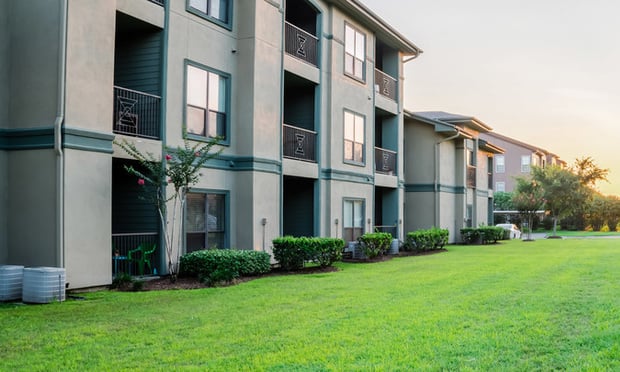DALLAS-Locally based Axiometrics Inc. released its apartment data for Q2 2013, with three of the major Texas MSAs well-represented when it came to units delivered. The Dallas MSA claimed first place, delivering 3,203 units during the quarter, followed by the Houston MSA, which delivered 2,593 units. Coming in fifth was the Austin/Round Rock area (which introduced 1,692 units to the market). San Antonio came in 10th, with its delivery of 1,138 units.
"Texas markets continue to lead the way when it comes to job and population growth, which will drive demand for the new supply," says Jay Denton, vice president of Axiometrics. The question, however, arises as to whether too much is being delivered, even in the face of positive job and population growth. In addressing this issue, Denton tells GlobeSt.com that the oversupply question depends on property development in the suburbs.
"However, we are hearing from developers who say that construction cost increases and the slowing rent growth are making it difficult to make deals work in the suburbs," he says. "If so, the existing pipeline, mostly in the urban areas, should get absorbed and rent growth could begin increasing at a greater pace again.”
In a discussion concerning national annual effective rent growth, Axiometrics analysts point out that the national rent growth has slowed for the eighth consecutive quarter as many MSAs are decelerating from strong growth in the previous three years. The peak annual rent growth at the national level in the current cycle was 5.2% two years ago, in July 2011.
This doesn't mean, however, that effective rent growths are coming to a halt. The statistics point out that 20 of the top 88 MSAs continue reporting an annual effective rent growth greater than 4%. This is well above the long-term average effective rent growth rate of 2.1%. For the second quarter, 11 MSAs enjoyed annual effective rent growth of 6% or greater, with all 11 MSAs located in four states: California, Colorado, Florida and Texas.
Getting back to the Texas markets, Denton points out it'll be interesting to see if the "big four" metros can absorb the larger increase in unit deliveries without either raising concessions or reducing effective rent growth – or seeing a decline in occupancy. In Texas, "Houston is absorbing the best now with rents increasing at a 6% annual rate and occupancy at about 93.3%,” Denton adds.
Want to continue reading?
Become a Free ALM Digital Reader.
Once you are an ALM Digital Member, you’ll receive:
- Breaking commercial real estate news and analysis, on-site and via our newsletters and custom alerts
- Educational webcasts, white papers, and ebooks from industry thought leaders
- Critical coverage of the property casualty insurance and financial advisory markets on our other ALM sites, PropertyCasualty360 and ThinkAdvisor
Already have an account? Sign In Now
*May exclude premium content© 2024 ALM Global, LLC, All Rights Reserved. Request academic re-use from www.copyright.com. All other uses, submit a request to [email protected]. For more information visit Asset & Logo Licensing.








